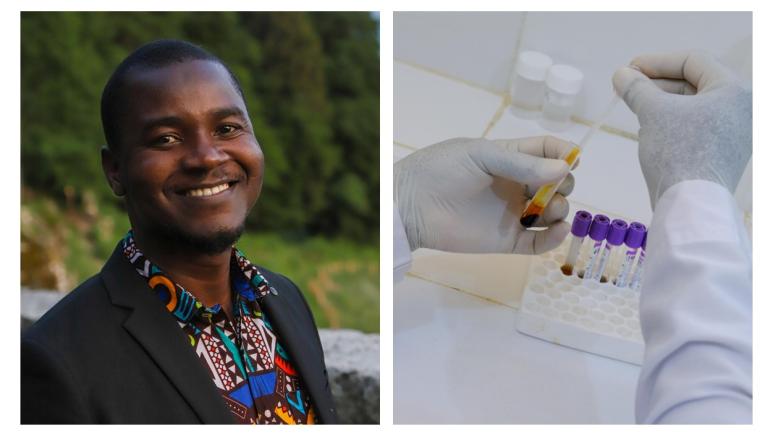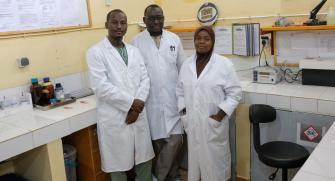Pneumococcal Disease: A study reveals the effectiveness of fractional doses of Pneumosil® vaccine in protecting children. What is the impact in terms of access to the vaccine?
Can you give us a brief overview of the study and its objectives?
Issaka Soumana: The aim of our study was to assess the effectiveness of mass vaccination campaigns using full and fractional doses of the 10-valent pneumococcal vaccine, PCV10, in reducing the carriage of pneumococcal bacteria in children, and thus reducing the transmission of vaccine serogroups. We conducted this research in 63 clusters made up of 75 villages in the Madarounfa department in the Maradi region of Niger, targeting children aged 1 to 9. The main objective was to determine whether the use of a fractional dose during a mass campaign could offer protection similar to that of the full dose, thereby helping to increase vaccine accessibility and reduce costs.
What are the risks of pneumococcal infection?
Issaka Soumana: The infection is caused by a bacterium called Streptococcus pneumoniae or pneumococcus, and mainly affects young children, the elderly and people suffering from chronic illnesses or undergoing treatment that weakens their immune defenses. This bacterium can cause serious infections such as meningitis, septicemia and, most often, lung infections. Pneumococcus is the most frequent cause of severe pneumonia and pneumonia-related deaths worldwide. Every year, millions of cases of pneumococcal disease occur worldwide, affecting around 3 million children and causing around 500,000 deaths (1).
And what are the means of prevention?
Issaka Soumana: The three World Health Orgnaization (WHO)-prequalified pneumococcal conjugate vaccines (PCV) - Prevenar® (Pfizer PCV13), Synflorix® (GSK PCV10) and PNEUMOSIL® (IBS PCV10) - are highly effective in preventing infections caused by Streptococcus pneumoniae. Their introduction has considerably reduced carriage of the bacteria. Their availability in low-income countries - 73 countries at the end of 2019 (2) - facilitated by the Vaccine Alliance, GAVI, has enabled their deployment despite their high costs. The approval in 2019 of Pneumosil® vaccine, marketed by the Serum Institute of India, has changed the game due to its lower cost (2USD/dose) compared with other PCVs, although it remains one of the most expensive vaccines in Expanded Immunization Programs (EPI).
However, challenges remain for middle-income countries not eligible for GAVI, and for massive catch-up campaigns not covered by this alliance.
What means are available in Niger to prevent pneumococcal infections? and what are their consequences/impact?
Issaka Soumana: Since 2014, Niger has benefited from the GAVI scheme and introduced the pneumococcal vaccine, a PCV-13, into its Expanded Program on Immunization, with 3 doses intended for infants at 6, 10 and 14 weeks of age.
Despite the efforts of the State of Niger and its partners, the results in terms of coverage still need to be improved. In 2019, administrative vaccination coverage in the Maradi region for the 3 doses was estimated at 48% (3). This relatively low coverage does not rule out high carriage, which may extend to older age groups, necessitating mass campaigns.
Can you tell us more about your study and its main findings?
Issaka Soumana: The results are quite promising. We conducted a cluster-randomized trial, dividing the villages into three groups: the first received a full dose of PCV10, the second received a fifth of the full dose and the third received no vaccination campaign. We collected nasopharyngeal samples from children six months before and after the campaign to measure the presence of pneumococcal bacteria.
Before vaccination, the presence of pneumococcal bacteria was similar in all groups: 15.6% in the full-dose group, 17.9% in the split-dose group and 18.8% in the control group. After vaccination, these rates fell to 4.6% in the full-dose group and 8% in the fractional -dose group, while the control group saw only a modest reduction to 16.5%. The study thus demonstrated the non-inferiority of fractional -dose campaigns compared with full-dose campaigns, suggesting that fractional doses can be effective in accelerating herd immunity.
Can you tell us about the practical implications of implementing mass vaccination campaigns? and the contribution of fractional doses in this context?
Issaka Soumana: Even with the introduction of pneumococcal vaccines as part of routine infant immunization, it can take many years before the entire population is protected. This can be seen in Niger, where vaccination coverage is still low in some regions. Studies have suggested that mass vaccination campaigns could accelerate the achievement of herd immunity. However, such campaigns can be costly and limited in terms of the quantity of vaccine available. Fractional doses could facilitate their deployment, but it is especially in humanitarian emergency contexts, where it is necessary to vaccinate displaced populations on a massive scale, that the supply and cost of vaccines represent an obstacle. In such situations, the exceptional use of fractional doses could protect a larger number of children, offering a viable solution.
*European and Developing Countries Clinical Trials Partnership
- https://www.thelancet.com/journals/langlo/article/PIIS2214-109X(18)30247-X/fulltext
- https://www.who.int/teams/health-product-policy-and-standards/standards-and-specifications/vaccine-standardization/pneumococcal-disease
- Administration coverage based on UNICEF immunization data https://data.unicef.org/topic/child-health/immunization/









